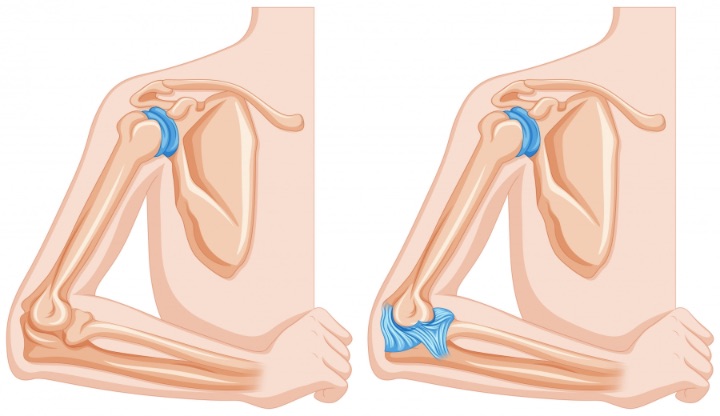Rotator Cuff Tendinopathy is a condition that affects the tendons of the rotator cuff, causing pain, weakness, and limited mobility in the shoulder. Tendinitis, tendon inflammation, and rotator cuff injury are all related to this condition.
If left untreated, Rotator Cuff Tendinopathy can lead to further tendon degeneration and even rotator cuff tears.
Rotator Cuff Tendinopathy is a condition that affects the tendons in the shoulder. It is characterised by tendon inflammation, often referred to as tendinitis, and can lead to shoulder tendon pain, weakness, and limited range of motion.
The rotator cuff is a group of four tendons that attach to the shoulder blade and connect to the upper arm bone. These tendons are responsible for stabilising the shoulder joint and facilitating arm movement.

Photo Credit: brgfx
When the tendons in the rotator cuff become damaged or degenerate, it can result in Rotator Cuff Tendinopathy. This condition can affect anyone, but it is more commonly found in individuals who engage in repetitive overhead motions, such as athletes and construction workers, or those over the age of 40.
Tendinitis is a condition that describes inflammation of a tendon. This inflammation can occur as a result of overuse, injury, or degeneration of the tendon.
In the case of Rotator Cuff Tendinopathy, tendinitis can occur in any of the four tendons that make up the rotator cuff. This inflammation can cause pain, weakness, and limited range of motion in the shoulder.
Rotator Cuff Tendinopathy can significantly impact an individual’s quality of life, making it difficult to perform simple daily activities such as reaching for items on high shelves or getting dressed.
If left untreated, Rotator Cuff Tendinopathy can progress to a rotator cuff tear, which can require surgical intervention. It is important to seek medical attention if you experience any symptoms of Rotator Cuff Tendinopathy.
Rotator Cuff Tendinopathy is characterised by a range of symptoms that can vary in severity. The most common symptom is shoulder tendon pain, which can be felt in the front, back, or side of the shoulder. This pain can be sharp or dull and can be exacerbated by certain movements or activities.
Individuals with Rotator Cuff Tendinopathy may also experience weakness in the affected shoulder, making it difficult to perform certain tasks. Limited range of motion is another symptom, where individuals may find it challenging to lift their arm above their head or reach behind their back.
The symptoms of Rotator Cuff Tendinopathy can significantly impact daily activities, making it difficult to perform simple tasks such as reaching for an object or lifting a weight. It is essential to seek early treatment to prevent the condition from worsening.
If you notice persistent shoulder pain or weakness, especially when carrying out daily activities, you should seek medical attention.
Sometimes, individuals may not experience any symptoms despite tendon degeneration. This is why regular check-ups with a healthcare professional are essential in the early detection and management of Rotator Cuff Tendinopathy.
The symptoms of Rotator Cuff Tendinopathy can impact daily activities, making it difficult to perform tasks such as reaching for an object on a high shelf or lifting a weight. In severe cases, individuals may struggle to perform basic tasks such as brushing their hair or getting dressed.

Photo Credit: Drazen Zigic
Early diagnosis and prompt treatment are crucial in preventing the progression of Rotator Cuff Tendinopathy and reducing the impact on daily activities. Treatment options range from conservative approaches, such as rest, physical therapy, and medication, to more invasive treatments such as surgery.
Rotator Cuff Tendinopathy can be caused by a number of factors that lead to tendon degeneration. These factors can include:
Rotator cuff injuries, such as tears, strains, or overuse, can weaken the tendons and make them more susceptible to damage. Repetitive shoulder motions, such as throwing a baseball or lifting weights, can also cause wear and tear on the tendons over time. Age-related degeneration of the tendons can result in reduced blood supply and tissue repair, which can result in progressive degeneration and weakening of the tendons.
Individuals participating in certain occupations or sports activities involving overhead motions are at a greater risk of developing Rotator Cuff Tendinopathy. This could include athletes who frequently use their shoulders for throwing, such as baseball pitchers or swimmers. It could also include manual labourers, such as painters or carpenters, who use their arms for lifting and reaching overhead.
It is important to take necessary precautions to avoid Rotator Cuff Tendinopathy, such as properly warming up before any physical activity, using proper technique, and avoiding overuse and repetitive motions.
Several treatment options are available for Rotator Cuff Tendinopathy, which vary depending on the severity of the condition. Here are some of the most common approaches:

Photo Credit: stefamerpik
The treatment options may differ if Rotator Cuff Tendinopathy progresses to a rotator cuff tear. Depending on the size and severity of the tear, a doctor may recommend:
It is important to note that treatment plans for Rotator Cuff Tendinopathy and Rotator Cuff Tears are individualised and depend on the severity of the condition and the patient’s overall health and goals.
As part of the management of Rotator Cuff Tendinopathy, exercises can play a crucial role in strengthening the rotator cuff muscles and improving shoulder mobility. It is essential to perform these exercises under the guidance of a healthcare professional to ensure proper technique and frequency. Here are some exercises that can help:
This exercise helps improve shoulder mobility and range of motion. Stand with your back against a wall, feet shoulder-width apart, and arms at your sides. Slowly slide your arms up the wall until they are overhead, then slowly lower them back down to your sides. Repeat for 10-15 repetitions.
Attach a resistance band to a sturdy object at elbow height to strengthen the rotator cuff muscles. Stand with your side to the band and your elbow bent at a 90-degree angle. Slowly rotate your arm away from your body, stretching the band. Return to the starting position and repeat for 10-15 repetitions.
This exercise helps improve posture and strengthen the upper back muscles. Sit or stand with your arms at your sides and your shoulders relaxed. Squeeze your shoulder blades together, holding for 5 seconds, then release. Repeat for 10-15 repetitions.

Photo Credit: nikitabuida
It is crucial to perform these exercises correctly and avoid overexertion, which can worsen symptoms. Consult with a healthcare professional before beginning any exercise program.
These exercises can be performed daily as part of a comprehensive management plan for Rotator Cuff Tendinopathy. While they can be effective, it’s important to remember that each individual’s treatment plan should be tailored to their specific needs and health status.
Rotator cuff tendinopathy can be managed by a combination of conservative treatments, including rest, pain management with over-the-counter nonsteroidal anti-inflammatory drugs (NSAIDs), physical therapy to strengthen the muscles around the shoulder, and application of ice or heat. In more severe cases, corticosteroid injections or even surgery may be necessary. Always consult your doctor for the best treatment plan for your specific condition.
Rotator cuff tendinopathy is a condition characterized by damage, inflammation, or irritation of one or more of the tendons in the rotator cuff – a group of muscles and tendons that stabilize the shoulder. This damage can result from overuse, aging, or an injury.
Healing time for rotator cuff tendinopathy can vary widely based on the severity of the condition, the individual’s health status, and their commitment to rehabilitation. Mild cases can improve with appropriate treatment in a few weeks, while severe or chronic cases may take several months or longer.
Symptoms of a rotator cuff tendinopathy can include pain and tenderness in the shoulder, especially when lifting the arm, weakness in the shoulder, difficulty sleeping on the affected side, and reduced range of motion. The pain may start as mild and gradually worsen over time.
Surgery is typically considered a last resort in the treatment of Rotator Cuff Tendinopathy. It may be recommended when conservative approaches have failed to provide relief, or if there is significant tendon damage or a full-thickness rotator cuff tear. The type of surgery depends on the specific condition and severity of the injury.
While it is not always possible to prevent Rotator Cuff Tendinopathy, there are steps individuals can take to reduce their risk of developing this condition. These may include performing appropriate warm-up and cool-down exercises before and after physical activity, avoiding repetitive overhead arm motions, maintaining good posture, and engaging in regular exercise to strengthen the rotator cuff muscles.
You can take several steps at home to manage the symptoms of Rotator Cuff Tendinopathy. These may include resting the affected shoulder, applying ice to reduce inflammation and pain, performing specific exercises to strengthen the rotator cuff muscles and improve range of motion, and taking over-the-counter pain medication as directed by your healthcare provider.
The recovery time for Rotator Cuff Tendinopathy can vary depending on the severity of the condition and the type of treatment received. In many cases, conservative approaches can provide relief within a few weeks to several months. However, recovery from surgery may take several months or longer.
If you have further questions or concerns about Rotator Cuff Tendinopathy, speak with your healthcare provider. They can provide personalised recommendations for managing your condition and improving shoulder function.